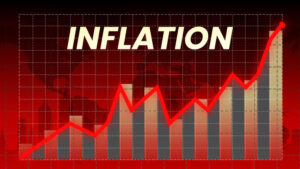Why Decades of Inflationary Finance Are Finally Coming Home to Roost
The comments below are an edited and abridged synopsis of an article by David Stockman
Eventually, the Fed’s inflationary credit works its way through the global economy and comes home to roost in the form of reduced domestic output and rising prices. In this regard, there is no more powerful tell than the round trip of the PCE deflator for durable goods during the past 28 years.
Prices for durable goods, mostly manufactured abroad, plunged by a staggering 40% between 1995 and the covid lockdown bottom in Q2 2020.
It was caused by a one-time arbitrage of labour and other local production costs on the massively expanded global supply chain enabled by modern technology.
But it wasn’t capitalism alone. Stockman discusses China and the global supply chain; the Great Inflation of the 1970s; inflationary money in a globalized economy; and deeply embedded inflation fostered by the Fed that is more vicious than the perma-bulls of Wall Street every imagined.
The correct approach to core inflation is not to drop items from the price basket (food, energy, shelter). Take that far enough and inflation drops to zero because you’re no longer measuring anything that resembles the general price level.
By contrast, the trimmed CPI fits the bill because monthly it drops out the high and low items, but these are never the same components. You are smoothing the monthly bumps, not eliminating the price structure.
In short, decades of inflationary finance are coming home to roost. The Fed is not in charge of the cycle and it’s not over-doing its belated attempt to permit interest to return to rationality relative to inflation.
They say that the Fed always breaks something, but that is only partially true. What its broke were the money and capital markets long ago; there is only more demolition to come.

